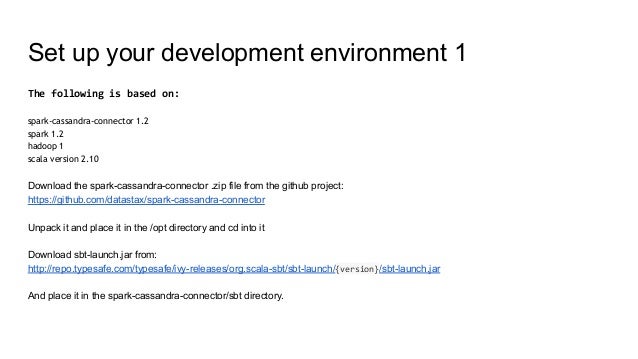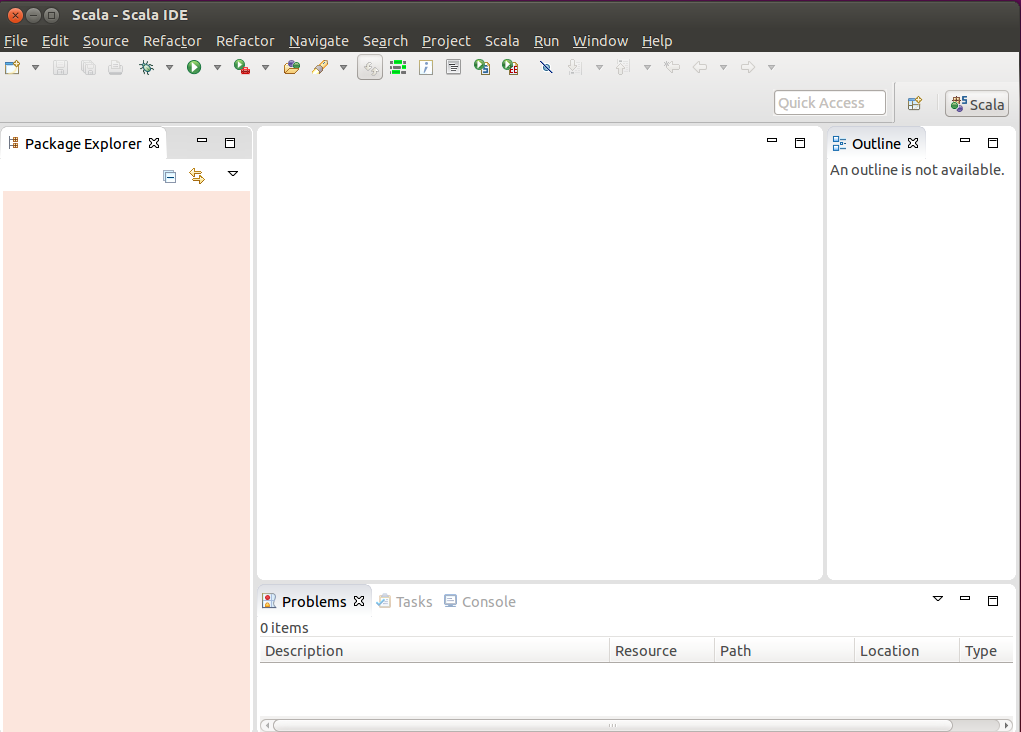

- Sbt download spark libraries how to#
- Sbt download spark libraries code#
- Sbt download spark libraries free#
Thin JAR files only include the project’s classes / objects / traits and don’t include any of the project dependencies. You can build a “thin” JAR file with the sbt package command. JAR files can be attached to Databricks clusters or launched via spark-submit.
Sbt download spark libraries code#
Hopefully it will help you make the leap and start writing Spark code in SBT projects with a powerful IDE by your side! JAR File BasicsĪ JAR (Java ARchive) is a package file format typically used to aggregate many Java class files and associated metadata and resources (text, images, etc.) into one file for distribution.
Sbt download spark libraries how to#
This episode will demonstrate how to build JAR files with the SBT package and assembly commands and how to customize the code that’s included in JAR files. Scala is a difficult language and it’s especially challenging when you can’t leverage the development tools provided by an IDE like IntelliJ. Stay in touch via Facebook and Twitter for upcoming tutorials.Spark JAR files let you package a project into a single file so it can be run on a Spark cluster.Ī lot of developers develop Spark code in brower based notebooks because they’re unfamiliar with JAR files. This concludes our tutorial on IntelliJ Import Dependencies - Getting Started With build.sbt and I hope you've found it useful!
Let us not focus on the actual logging configurations, but instead make sure that you've now seen how to add and use external libraries. Unlike when we used println() from the previous tutorials, using () from Scala Logging provides additional prepended data points such as time followed by the function and class where the () was called. In IntelliJ's console window, we will see the output of our application as follows: To run our application, it’s the usual right click anywhere in our HelloWorldWithScalaLogging file and select Run as follows: We now also have a logger variable which has an info function that takes a String which in our case is simply "Hello World from Scala Logging". In upcoming tutorials, I will cover the trait and with keyword in more details, but for now think of it as adding extra functionality to our HelloWorldWithScalaLogging application. We have used the with keyword to add the LazyLogging trait. So let's use it by adding the LazyLogging trait to our HelloWorldWithScalaLogging application as follows: If you've followed the previous steps, you should now have access to Scala Logging from your application. We now have the relevant dependencies as shown above. 
However, let's take another shortcut and expand the External Libraries folder on the left panel: To verify that the Scala Logging dependencies are now in our classpath you can open the module settings as described in Tutorial 9. If for some reason IntelliJ does not pull down the dependencies after you've saved the build.sbt file, you can expand the SBT tab in the right panel and click on the refresh button.Ħ. Verify Scala Logging is in your classpath There will be a progress bar in the bottom panel:

 Scala logging also requires a logger such as logbackĪfterwards save the build.sbt file and you should notice that IntelliJ will start downloading the dependencies. To add the Scala Logging library, you need to add the following library dependencies in build.sbt: Our build.sbt file contain a few properties including the name of our application, some default version number and the Scala version which our application is currently targeting. Double click on the build.sbt file as shown below. If you recall from the Tutorial 8, the build.sbt file is located at the root of our project.
Scala logging also requires a logger such as logbackĪfterwards save the build.sbt file and you should notice that IntelliJ will start downloading the dependencies. To add the Scala Logging library, you need to add the following library dependencies in build.sbt: Our build.sbt file contain a few properties including the name of our application, some default version number and the Scala version which our application is currently targeting. Double click on the build.sbt file as shown below. If you recall from the Tutorial 8, the build.sbt file is located at the root of our project. Sbt download spark libraries free#
If you are unsure about how to create package or extend the App trait, feel free to review the Tutorial 4 Your First Scala Hello World Application. Let us name our package .tutorial_10 and also create a new Scala object named HelloWorldWithScalaLogging as follows: If you do not have IntelliJ installed or the allaboutscala project, please follow the previous tutorials. Open IntelliJ and our allaboutscala project The documentation has useful code snippets to guide you with using various SBT tasks.Ģ. You can refer to the online documentation for SBT and as a matter of fact you would most certainly want to bookmark it. It comes with tasks for compiling, running, testing, packing … etc your Scala application. NET in the past, think of it as a build tool similar to Nuget. If you've used Java in the past, think of it as a build tool similar to Ant or Ivy. Also commonly referred to as Scala Build Tool. In this tutorial, we will show how to use SBT to import external libraries so that we can access and use them in our Scala applications.Īs an example, we will import the Scala Logging library to allow us to log statements from our Scala application.








 0 kommentar(er)
0 kommentar(er)
